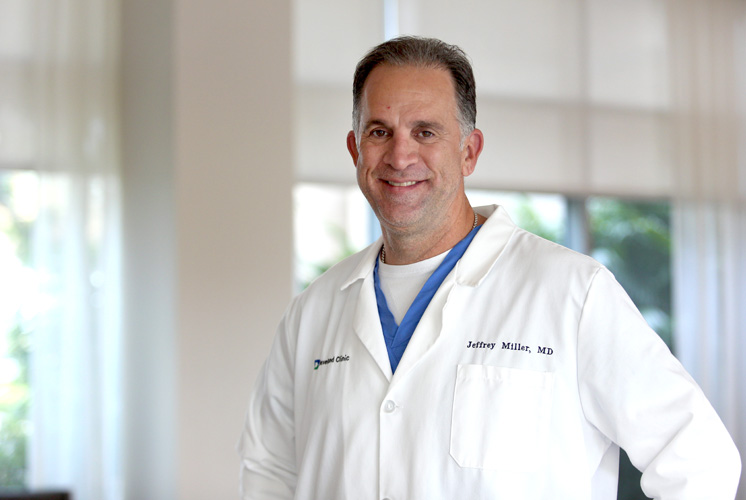
Just exactly what is “endovascular coiling” and why should you even care?
Well, if you ever suffer a cerebral aneurysm, you should hope there’s someone like neurosurgeon Dr. Jeffrey Miller of Cleveland Clinic Martin Health and Tradition Hospital close at hand because he knows precisely what endovascular coiling is and, more importantly, how to use it to save your life.
The Columbia University Department of Neurosurgery says “a cerebral aneurysm (also called an intracranial aneurysm or brain aneurysm) is a bulging, weakened area in the wall of an artery in the brain, resulting in an abnormal widening or ballooning.”
Because there is a weakened spot in the aneurysm wall, there is an imminent risk the artery will rupture and cause life-threatening bleeding or brain damage.
Preventing blood flow into an aneurysm helps to keep it from rupturing.
That is where “coiling” comes in.
“Endovascular coiling is a procedure performed to block blood flow into an aneurysm,” according to Johns Hopkins Neurology and Neurosurgery Department, which further states that the procedure “is a minimally invasive technique, which means an incision in the skull is not required to treat the brain aneurysm. Rather, a catheter is used to reach the aneurysm in the brain.”
Johns Hopkins continues: “During endovascular coiling, a catheter is passed through the groin up into the artery containing the aneurysm. Platinum coils are then released. The coils induce clotting (or embolization) of the aneurysm and, in this way, prevent blood from getting into it.”
If you are wondering how physicians such as Miller can run a catheter up from the groin into a specific artery inside the brain, Miller is happy to explain.
“I utilize biplane fluoroscopy with contrast. This allows me to navigate all the devices from the entry site – an artery at the top of the pelvis – to the brain.”
For the uninitiated, biplane fluoroscopy is an imaging technique that uses real-time X-rays in a sort of continuous “movie” format.
Without missing a beat, Miller adds, “at Tradition, we have the newest, most advanced biplane operative suite currently available. The procedure is similar to cardiac catheterization but for the brain. The majority of catheters we use are smaller than drinking straws. I use a microwire – the size of a human hair – to navigate the catheters and devices to the brain. I visualize where I am going via the biplane machine.”
This particular imaging technique produces highly detailed, 3-dimensional continuous views of blood vessels leading to the brain as well as those deep inside the brain and are used by physicians like Miller to perform a host of neuro-interventional procedures such as the removal of blood clots, treatment of carotid artery blockages, treating brain and neck tumors, inter-cranial hemorrhages, spinal compression fractures and the above mentioned aneurysm repairs.
Additionally, the U.S. National Library of Medicine says these biplane devices provide “an important reduction in patient exposure to radiation” when compared to the previous generation of “monoplane” fluoroscopy systems.
Even more impressive is Miller’s ability to do all this as quickly as possible.
“When it comes to emergent stroke procedures, speed is of the essence,” says Miller, adding, “from the time the patient is placed on the biplane table, I am able to access the vessels in their brain in less than three minutes.”
Because of that, Miller claims, “the overall risk profile for endovascular brain aneurysm repair is less than 3 percent. Our documented complication rate at Cleveland Clinic Tradition Hospital is less than that so the success rate with lack of complications is extremely high.”
What is perhaps just as impressive is that after a successful endovascular coiling procedure, “a patient might expect to return home after spending one night in the neuro intensive care unit, and may expect to return to normal activities within two days,” according to Johns Hopkins.
Miller, whose father and grandfather were both physicians, got his surgical training at New York’s Albert Einstein school of medicine before completing two fellowships, including one at Northwestern University in Chicago in endovascular neurosurgery.
Dr. Jeffery Miller is a neurosurgeon with Cleveland Clinic Martin Health and Tradition Hospital at 10050 SW Innovation Way in Port St. Lucie. The phone number is 772-288-5862.



